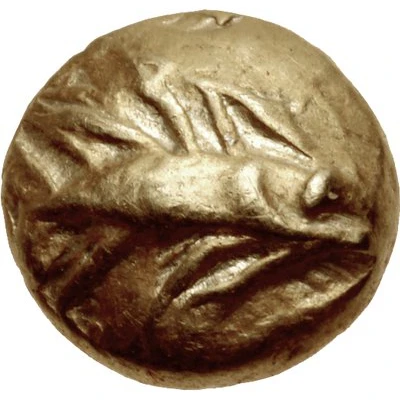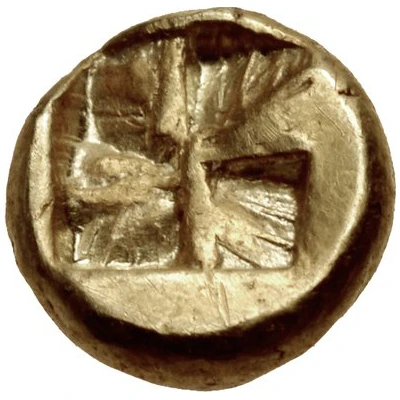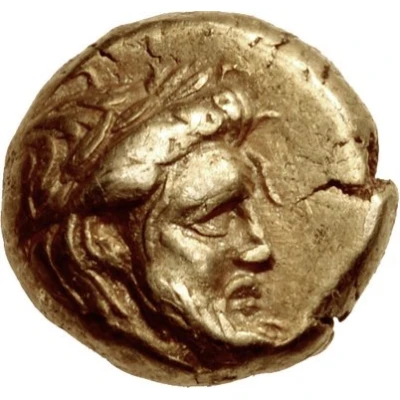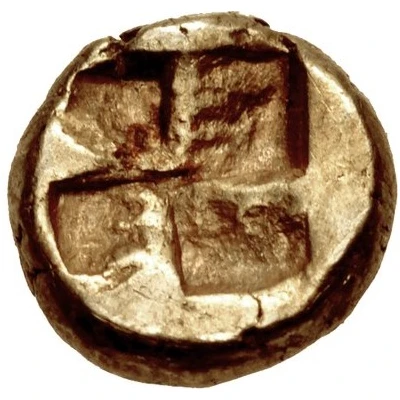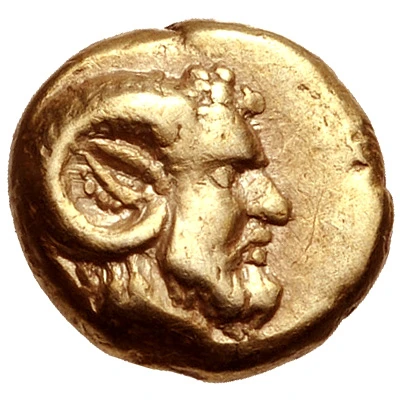
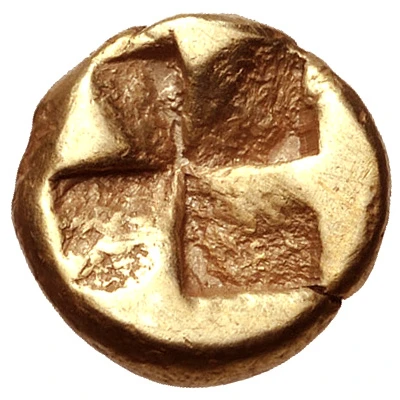

© Classical Numismatic Group, Inc.
Myshemihekte 500 BC - 450 BC
| Electrum | 0.68 g | 7.0 mm |
| Issuer | Kyzikos (Mysia) |
|---|---|
| Period | City administration (600 BC - 1 AD) |
| Type | Standard circulation coin |
| Years | 500 BC - 450 BC |
| Value | Myshemihekte (1⁄24) |
| Currency | Electrum Stater (600-330BC) |
| Composition | Electrum |
| Weight | 0.68 g |
| Diameter | 7.0 mm |
| Shape | Round (irregular) |
| Technique | Hammered, Incuse |
| Demonetized | Yes |
| Updated | 2024-10-10 |
| Numista | N#127544 |
|---|---|
| Rarity index | 100% |
Reverse
Quadripartite incuse square.
Comment
Cf. Von Fritze I 130 (unlisted denomination); cf. Boston MFA 1520 (stater); Warren 1423 (stater); cf. SNG BN 281 (stater).
Interesting fact
One interesting fact about the Myshemihekte coin is that it features a unique blend of ancient Greek and Persian design elements. The obverse side of the coin depicts a lion's head, which is a common motif in ancient Greek coinage, while the reverse side features a Persian-style altar with a fire burning on top of it. This blending of cultural influences reflects the rich cultural heritage of the region where the coin was minted, Mysia, which was located in the northwest of modern-day Turkey and was a melting pot of Greek and Persian cultures during the 5th century BC.
